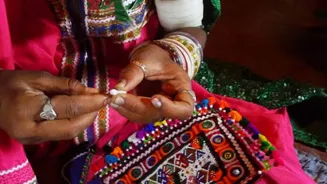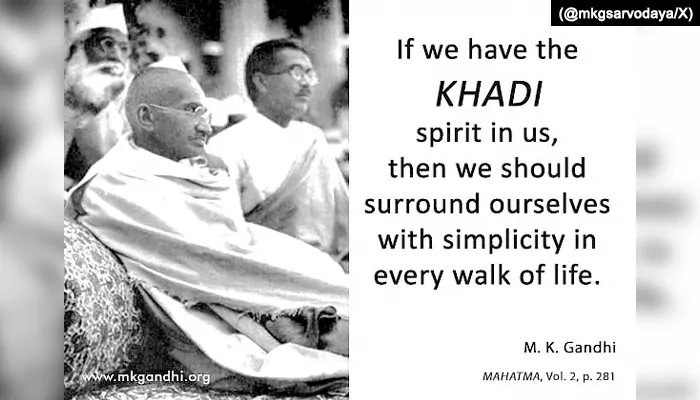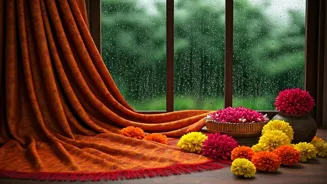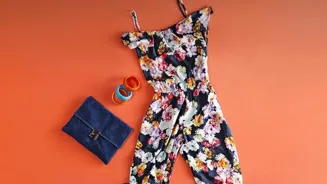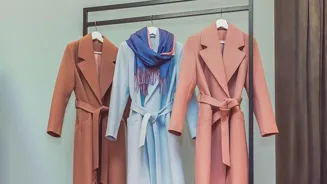In India’s vibrant craft landscape, the “Made in India” label is often celebrated but as Amrita Somaiya, Trustee of Somaiya Vidyavihar and Governing Board Member, Somaiya Kala Vidya (SKV), points out,
it rarely tells the whole story. “The label ‘Made in India’ has long served as a catch-all, often overlooking the nuanced identities, skills, and stories of the artisans who actually create these pieces. To move toward more honest representation, we need a fundamental shift from seeing artisans as anonymous producers to recognizing them as designers, storytellers, and entrepreneurs in their own right,” she says.
At SKV, this shift is driven by design education for traditional artisans, enabling them to innovate from within their own traditions. Through initiatives like Design Craft, artisan-designer collections reach the market under their own names, allowing buyers to connect with both the maker and the meaning behind the work. “Craft is not a monolith. It’s diverse, dynamic, and deeply personal. The future lies in moving from ‘Made in India’ to ‘Designed and Made by…’, where the name and identity of the artisan are not hidden but proudly celebrated,” adds Somaiya.
For Somaiya, sustainability is not just a question of materials, but of livelihoods. “It’s about making sure that the incredible traditions we work with don’t just survive, but thrive in the hands of the artisans who own them… For me, sustainability is about keeping the heritage alive, communities strong, and our connection to the earth, to our culture, and to each other intact.”
Journeys of Craft and Change
Among the artisans who have taken this philosophy to heart is Aashiya Khatri, a Bandhani artisan-designer from a family steeped in the tradition. She admits she once dismissed the craft as “too symmetric and typical” until she began exploring contemporary, abstract forms. “That’s how I decided to take up Bandhani as a career to supply to people like me who like crafts, but need something modern,” she explains.
Kishan Bokhani, an extra-weft weaver, first learned his craft in primary school but nearly left it behind while studying to become an electrician. The realisation that this path would make him “a labourer, not a skilled artisan” drew him back. His design education at SKV opened new creative possibilities. “Before joining SKV, I mostly produced designs created by others. Now I create my own designs, collections, and brand SAATKHANI and work independently.”
For Akhtar Khatri, Batik is a six-generation family legacy. He recalls his early years in the workshop watching cutting, printing, and dyeing processes, and later joining SKV to hone his design and marketing skills. “After graduating, my vision changed. I developed a USP in the market and launched my own brand ‘Miniya by Akhtar.’ We are not just artisans anymore, we are designers too.”
Sustainability in Practice
For Aashiya, sustainability is a deeply personal, almost familial value. She tells the story of her mother bringing home restaurant food in stainless steel containers to avoid plastic. “Her small act serves as a powerful lesson that sustainability isn’t just about trendy buzzwords; it’s about making conscious choices that align with our beliefs.” In her workshop, waste cloth is repurposed into diaries, bags, and more.
Kishan stays true to traditional extra-weft weaving techniques even as designs evolve. Akhtar, meanwhile, is reviving natural dyes, reducing chemical use, and prioritising handwoven fabrics. “Natural dye plays an important role in sustainability… it benefits the environment and supports employment from farming to weaving,” he says.
Overcoming Resistance
Innovation in traditional crafts is rarely without its critics. Aashiya faced skepticism from seniors who feared modernisation would dilute Bandhani’s identity. Her answer was to highlight the craft’s unique intricacy, which transcends motifs. Kishan’s departure from regular patterns met similar doubts, but his SKV-inspired collections proved successful. Akhtar had to educate customers about the true value of high-quality Batik, contrasting it with mass-produced market versions.
Looking Forward
Hope runs deep among these artisans. Aashiya believes Bandhani is “evergreen,” with roots stretching back to the Ajanta Caves, and sees modernisation as the key to survival. Kishan envisions a future where more weavers become recognised artisan-designers. Akhtar’s ambition is to take Kutch’s Batik printing to national and international stages while keeping it sustainable and innovative.
As Somaiya reflects, the sustainable fashion movement in Kachchh is not just about preserving craft, it’s about transforming the way the world sees artisans. Through education, authorship, and visibility, these creators are reclaiming the narrative of what “Made in India” truly means.
